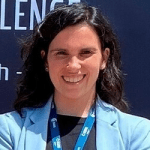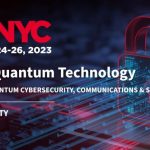Quantum News Briefs July 17: Quantum computing qubit entanglement record broken at 51 by Xiao-bo Zhu at the U of Science & Technology of China; Extreme measuring device can bring quantum technology to your smartphone; U of Illinois group establishes criterion for nonlocal quantum behavior in networks + MORE

Quantum News Briefs July 17:
Quantum computing qubit entanglement record broken at 51 by Xiao-bo Zhu at the U of Science & Technology of China
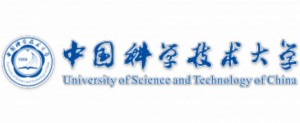 New research, led by Xiao-bo Zhu at the University of Science and Technology of China, resulted in a record 51 qubits (the quantum computing equivalent to transistors) being entangled, a necessary ability to unlock quantum computing. Quantum News Briefs summarizes the July 16 article by Franciso Pires in TomsHardware.
New research, led by Xiao-bo Zhu at the University of Science and Technology of China, resulted in a record 51 qubits (the quantum computing equivalent to transistors) being entangled, a necessary ability to unlock quantum computing. Quantum News Briefs summarizes the July 16 article by Franciso Pires in TomsHardware.
Zuchongzhi, the quantum computer used to achieve the experiments’ results, packs in 66 superconducting qubits – the same qubit technology backed by IBM and a number of other premier companies in the quantum computing space. This is the same technology on which IBM recently achieved quantum utility through its 127-qubit Eagle QPU (Quantum Processing Unit), showcasing from varied players that there’s particular life happening in the superconducting qubit space.
Entanglement is perhaps best understood as meaning that the qubits become enmeshed in such a way that it’s impossible to describe a single qubit without being able to describe all others and how they relate to each other: it’s essentially a unique system, a knot without any hanging threads.
Charles Hill, a researcher at the University of New South Wales in Australia, is perhaps one of the better-qualified scientists to comment on the results. Hill has been involved with similar research, and aimed to prove a similar “networked” entanglement between as many as 65 qubits. Hill described entanglement as “… one of the key differences between conventional computers and quantum computers, and it’s a key ingredient in quantum algorithms. Demonstrating large numbers of entangled qubits is then an important benchmark for a quantum computer.”
At the time of his research, Hill’s team didn’t succeed in proving the entanglement extended between the qubits as a group and not just between linked pairs, the same verification difficulty that Zhu encountered (and surpassed) with the Zuchongzhi QPU.
It’s expected that 51 entangled qubits won’t allow us to break through the quantum advantage barrier – at least not until scaling has a bit more time to do its thing. But with IBM having recently shown us that utility can already be extracted from our current-era quantum computers, it’s not out of the realm of probability that 51 entangled qubits unlocks a given answer we might not even know the question to yet. Click here to read the original, complete July 16 article by Francisco Pires.
Extreme measuring device can bring quantum technology to your smartphone
 University of Copenhagen researchers have invented a “quantum drum” that can measure pressure, a gas leak, heat, magnetism and a host of other things with extreme precision. It can even scan the shape of a single virus. The invention has now been adapted to work at room temperature and may be finding its way into our phones, as reported by a July 13 article on Phys.org summarized here by Quantum News Briefs.
University of Copenhagen researchers have invented a “quantum drum” that can measure pressure, a gas leak, heat, magnetism and a host of other things with extreme precision. It can even scan the shape of a single virus. The invention has now been adapted to work at room temperature and may be finding its way into our phones, as reported by a July 13 article on Phys.org summarized here by Quantum News Briefs.
The heart of the apparatus could be called a “quantum drum”: It is a thin membrane that vibrates like a drum skin, but with so small an amplitude that the laws of quantum physics are needed to describe what’s happening. In other words, it’s vibrating really fast. This means the drum can be used as an ultra-precise measuring device—a quantum supersensor.
“The sensor is so sensitive that, in principle, we could measure whether a single person is hopping from one leg to the other in Paris. We would be able to capture it here, in our Copenhagen basement, from thousands of kilometers away. But, because it would require them to jump at 1.4 million vibrations per second, the example is best regarded as a thought experiment,” laughs Professor Albert Schliesser from the Niels Bohr Institute, who heads the team behind the quantum sensor.
Thought experiments aside, the sensor is very real and has many possible uses. By reading changes in the vibrations with which the quantum drum moves, researchers can measure a wide variety of influences with extreme precision.
“For example, a change in temperature or the presence of a gas will directly affect the way the drum vibrates, and it’s the same when we place a virus on the drum. A laser allows us to read the result accurately. But this is just the beginning,” explains Professor Albert Schliesser. “By putting small piece of metal, or a tiny magnet on the membrane, we can also detect electric and magnetic fields with extreme precision,” he says.
The researchers have now proven that they can combine a kind of shock absorber of their own invention and a special laser-cooling technique to achieve the extreme precision even at room temperature, that is, without helium cooling.
This means that the sensor can now be made small enough to be put in a chip. “It can be a very small setup. For example, the sensor could sit inside a vacuum system in a semiconductor processing plant and keep an eye on temperature and gas leaks,” says the researcher. In the future, it may even be possible to integrate the sensor in a consumer device like a smart phone. Click here to read Phys.org article in-entirety.
U of Illinois group establishes criterion for nonlocal quantum behavior in networks
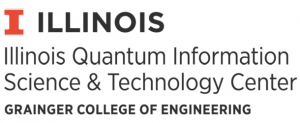 A new theoretical study from the Illinois Quantum Information Science and Technology Center provides a framework for understanding nonlocality, a feature that quantum networks must possess to perform operations inaccessible to standard communications technology. Quantum News Briefs summarizes Michael O’Boyle’s article.
A new theoretical study from the Illinois Quantum Information Science and Technology Center provides a framework for understanding nonlocality, a feature that quantum networks must possess to perform operations inaccessible to standard communications technology. Quantum News Briefs summarizes Michael O’Boyle’s article.
By clarifying the concept, researchers determined the conditions necessary to create systems with strong, quantum correlations.The study, published in Physical Review Letters, adapts techniques from quantum computing theory to create a new classification scheme for quantum nonlocality. This not only allowed the researchers to unify prior studies of the concept into a common framework, but it facilitated a proof that networked quantum systems can only display nonlocality if they possess a particular set of quantum features.
“On the surface, quantum computing and nonlocality in quantum networks are different things, but our study shows that, in certain ways, they are two sides of the same coin,” said Eric Chitambar, a professor of electrical and computer engineering at the University of Illinois Urbana-Champaign and the project lead. “In particular, they require the same fundamental set of quantum operations to deliver effects that cannot be replicated with classical technology.”
Nonlocality is a consequence of entanglement, in which quantum objects experience strong connections even when separated over vast physical distances. When entangled objects are used to perform quantum operations, the results display statistical correlations that cannot be explained by non-quantum means. Such correlations are said to be nonlocal. A quantum network must possess a degree of nonlocality to ensure that it can perform truly quantum functions, but the phenomenon is still poorly understood.
To facilitate study of nonlocality, Chitambar and physics graduate student Amanda Gatto Lamas applied the formalism of quantum resource theory. By treating nonlocality as a “resource” to manage, the researchers’ framework allowed them to view past studies of nonlocality as separate instances of the same concept, just with different restrictions on the resource’s availability. This facilitated the proof of their main result, that nonlocality can only be achieved with a limited set of quantum operations. Click here to read the article in-entirety on U of Illinois website.
Sweden, Finland eye quantum tech leap amid call for official strategy
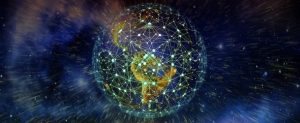 Gerard O’Dwyer of DefenseNews writes that Nordic defense companies could have a greater share of the world’s quantum computing market, as regional players Sweden and Finland each aim to advance their capabilities using the disruptive technology. Quantum News Briefs summarizes O’Dwyer’s July 7 article.
Gerard O’Dwyer of DefenseNews writes that Nordic defense companies could have a greater share of the world’s quantum computing market, as regional players Sweden and Finland each aim to advance their capabilities using the disruptive technology. Quantum News Briefs summarizes O’Dwyer’s July 7 article.
Sweden wants to use quantum technology to improve the performance of radar systems under the purview of the Chalmers University of Technology, In Finland, the state-funded organization VTT Research wants to bolster the processing capability of an existing quantum computer.
“There are many reasons why the defense industry might want to monitor, if not engage with, the quantum computer projects running in Sweden and Finland. It is generally recognized in defense quarters — and increasingly by governments, too — that while quantum science is a positive, its disruptive nature will bring challenges and a certain degree of threat,” Lars Sundström, an independent computer industry analyst based in Stockholm, told Defense News. “The big defense and cybersecurity players in the Nordic region are already connected in some way, and indirectly to the quantum projects in Finland and Sweden. Saab is probably the most well-known name in the mix,” Sundström added.
Saab is an “industrial partner” to the Wallenberg Centre for Quantum Technology, a co-partner with CUT in the quantum computer project. Saab is currently running several PhD-level projects at the center aimed at developing new applications for the defense industry, the most high-profile of which is for a quantum-enhanced noise radar.
Five organizations released a report in March, titled “A Swedish Quantum Agenda,” calling for a Swedish national strategy for quantum technology.
The document maps out how to deliver long-term financial support for related research, said Darja Isaksson, director general at the innovation funding agency Vinnova, one of the organizations that authored the report. The others are RISE, a research and innovation institute; Swelife, a life science-focused funding agency; the Swedish Research Council, the country’s largest governmental research funding body; and WACQT.
The report concludes that Sweden’s defense and national security sectors could harvest real value from four subfields — quantum computers, quantum simulators, quantum communication and quantum sensors — by using spinoff disruptive technologies to both create new and improve existing applications. Click here to read O’Dwyer’s article in-entirety.
Sandra K. Helsel, Ph.D. has been researching and reporting on frontier technologies since 1990. She has her Ph.D. from the University of Arizona.




















